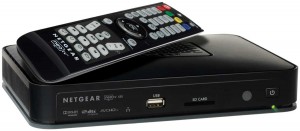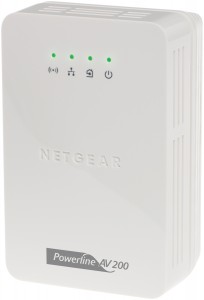In most countries, there is interest in setting up most of the densely-populated areas for a form of next-generation broadband Internet service. This will typically provide at least 10Mbps, if not 30Mbps or 100Mbps which will be more than double what your typical ADSL or cable broadband service will provide.
Key features that are being promoted alongside these services include the reliable streaming or downloading of high-definition TV content to many TV sets in the house as well as VoIP telephony, which will include FM-grade telephone conversations or reliable videophone conversations that are beyond the realm of science fiction. The VoIP telephony features will also work alongside remote-terminal setups and other telepresence setups to allow knowledge workers and management workers to work from home, thus eliminating the need to travel in order to commute to work.
One main issue that may affect your home network is making sure it is ready for the next-generation broadband service. This is by preparing the infrastructure for high-bandwidth data throughput and setting up a router that can work with the next-generation broadband technologies like VDSL2 or fibre-to-the-premises.
Upgrading your router to next-generation broadband
The next-generation broadband service will use different connection methods to what you are using now. This will either be fibre-to-the-home or VDSL2 via phone lines and will require a different kind of modem. In some cases, this modem may be provided by your “next-generation” Internet service provider as part of the deal or at extra cost. Some of these service providers may sell a broadhand router that has an integrated modem for the broadband connection as well as router functionality. There is also an increased likelihood for these devices to support VoIP analogue-telephony-adaptor functionality because these services will also be about VoIP telephony.
If you have an ADSL modem router, its ADSL functions will become redundant under this environment unless it has an Ethernet WAN (broadband) connection option. This function may be available in a few recently-issued high-end units either as an Ethernet socket that can be configured to be a LAN socket or WAN (Internet) socket; or as a dedicated Ethernet WAN socket.
When you buy your next Internet router for this technology, the WAN (Internet) side of the router should offer a Gigabit Ethernet connection so you can use it with fibre-to-the-premises setups where you have an “optical-network terminal” modem; fibre-to-the-curb or fibre-to-the-building setups that use Ethernet-to-the-customer copper-cable runs or other connection methods that use a Gigabit Ethernet socket. It may be worth keeping your eyes peeled for “dual-mode” DSL modem routers that work with ADSL setups or VDSL2 “next-generation” setups when you upgrade your ADSL router.
It also may be worth looking towards upgrading to a router which has 802.11n wireless and Gigabit Ethernet for LAN connectivity. Preferably, the 802.11n wireless network should be a dual-band setup but it doesn’t have to be a dual-radio (simultaneous dual-band) setup, as I will explain later. This will allow for higher bandwidth that the next-generation broadband Internet applications will need.
As well, you may have to pay attention to how the router handles “quality-of-service” with VoIP and multimedia traffic. It is because this kind of traffic will become more prevalent on these high-bandwidth networks and other Internet use like checking on email, viewing Web sites or “download-to-disk” applications doesn’t impair the experience you have during a phone call or when you watch streamed Internet TV.
Your home network
Here, I am talking about upgrading your home or small-business local network to cope with the increased bandwidth that next-generation broadband will provide. This setup is based around the use of a Cat5 wired Ethernet segment that you may have implemented or may want to implement as part of a renovation job; a Wi-Fi wireless segment used primarily for laptops, smartphones and similar portable devices and a HomePlug powerline segment that you may use as a temporary or semi-permanent “no-new-wires” network segment.
The Cat5 Ethernet segment
If you have wired your home for Ethernet and used a regular Ethernet switch as the network’s “central” switch, now is the time to upgrade it to a Gigabit Ethernet switch. This will provide a high-speed path to devices that have Gigabit Ethernet connectivity and can provide “next-generation” speeds in to the home network. The old 10/100 switch can work well as a “spur” switch for a cluster of devices that don’t have Gigabit Ethernet connectivity.
Again, it may be worth looking for a switch that also supports “quality-of’-service” when you upgrade the existing unit. This is even though most of the Ethernet switches that support this are more expensive and require you to visit a Web interface to “fiddle with knobs” to achieve this goal because they are targeted at business users who have their network and Internet managed by dedicated staff or contractors. This may be rectified over the coming years with the implementation of “logo-mandatory” specifications and standards for seamless QoS management.
If you are working on building new premises, considering renovations on your existing premises or are even just planning to rewire your existing premises to current safety expectations, now is the time to consider wiring it for Ethernet. I have written a good article on this topic in the context of new renovations, extensions or rewiring projects. At least make sure you place an Ethernet socket near every TV-antenna (aerial) socket in the house so you can cater for IPTV which will be part of the next-generation broadband environment.
The Wi—Fi wireless segment
As part of the upgrade, a wise step would be to implement 802.11n Wi-Fi in your wireless-network segment. As I have explained in the article “Understanding 802.11n High-Bandwidth Wireless Networking”, there are different varieties of access points and routers for this technology.
One way to go about this while maintaining your regular 802.11g equipment would be to set up another extended-service set with a 5.4GHz single-band access point or a dual-band router set up on 5.4GHz. The existing 802.11g router could be put in to service as an access point running the existing extended-service set. You then focus computer equipment that is equipped with dual-band 802.11n Wi-Fi interfaces to the 5.4GHz 802.11n segment while equipment like smartphones, netbooks and Internet radios work on the 2.4GHz 802.11g network. The WPA security key can be the same for both Wi-Fi segments and you could have one SSID being described as <PRIMARY-SSID-54g> for the 5.4GHz segment and <PRIMARY-SSID> for the 2.4GHz 802.11g segment.
As well, the Wi-Fi equipment should support or implement WMM (Wireless Multimedia) quality-of-service “out-of-the-box” but most current equipment doesn’t support it. This is again due to uncoordinated quality-of-service signalling and quality-of-service not becoming a “logo-mandatory” requirement.
The HomePlug powerline segment
This network segment may need to be reviewed if it is going to be the primary wired carrier for all of the multimedia data that next-generation broadband Internet will deliver. This is more so if you are using a HomePlug link to provide content to a DLNA-compliant network-enabled TV set or IPTV set-top box.
Here, you would need to use a HomePlug AV segment for any multimedia applications, a temporary building-building link or as a “no-new-wires” wired backbone between access points in a multi-access-point 802.11n wireless network. This can coexist with your existing HomePlug 1.0 Turbo segment which can be used for applications like connecting Ethernet-enabled network printers to the network or maintaining a backbone for a multi-access-point 802.11g wireless network. As far as any HomePlug AV-Ethernet bridges go, you should prefer those units that have Gigabit Ethernet so as to provide proper throughput to the equipment.
The up-and-coming HomePlug AV2 standard, which allows for higher throughput, MIMO-based operation and each HomePlug AV2 device being a repeater, can allow HomePlug AV devices to become part of that segment.
Purchasing subsequent computer equipment
Any desktop or all-in-one computers or network-attached-storage equipment that you subsequently buy should support a Gigabit Ethernet connection. This issue may not be of concern if you buy relatively-new equipment but can be of concern with older secondhand desktop computers. These can be upgraded through the installation of a Gigabit Ethernet PCI or PCI-Express card in these computers, which requires at the most a small Phillips-head screwdriver to complete.
When you buy Wi-Fi-enabled equipment like laptop computers, you may need to look for equipment that has 802.11n technology. This may be a limitation if you intend to buy a secondary-use laptop or netbook which may not have this functionality or buy smartphones, Internet radios or similar devices that have integrated Wi-Fi functionality because most such devices stick to 802.11g technology to keep costs down or allow longer run-times when run on batteries. This could be worked around through the creation of a “compatibility-mode” 802.11n extended-service-set on the 2.4GHz band or establishment of an 802.11g extended-service-set with its own SSID for these devices to use.
The situation will be likely to change from this year onwards because of work being undertaken to build small-footprint low-power-requirement 802.11g/n chipsets that are optimised for battery-operated devices and manufacturers being interested in implementing the technology in their devices.
Conclusion
Once you know how to have your network ready for next-generation broadband by replacing devices that may slow down the data throughput, you are then able to take advantage of what this new technology offers.


